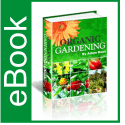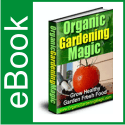Discovering How To Hydroponic
Discovering How To Hydroponic
Article by Mark E J Adams
When first discovering How To Hydroponic (the growing of plants without soil) new comers may be daunted by all the things you will be told you need and different ways to grow plants using hydroponics, remember there are differences between hydroponic growing and conventional gardening with some hydroponic systems being extremely complicated, having sensors to control everything from the strength of the nutrient solution the amount of light supplied to watering cycles, everything the plant needs to grow is controlled by computers through the sensors. Having said that, knowing how to hydroponic you will learn systems do not need to be complicated, in fact some systems can be very simple, with the average home setup consisting of a these basic parts, the reservoir to hold the nutrient solution, the growing tray to hold the plants, growing medium to help plant support, a submersible pump controlled by a timer to deliver the nutrient solution from the reservoir to the plants, unless you have a good natural light you will need grow lights and to oxygenate the nutrient solution an air pump. Good Lighting is required for your hydroponic garden to grow.The first consideration when learning how to hydroponic is the space you have available to set up your hydroponic system this will be governed many by what type of plants you want to grow, will it be indoors or outside, once you have planned what you intend to grow, where the system will go, you will need to find the right system that suits you and fits the planned location, you can choose to build your own system or buy a manufactured system. There are different types of hydroponic systems available, when learning how to hydroponic you should research these systems to find out how they supply the nutrient solution to the plants. As mentioned earlier depending on the method you chose to grow your plants you will need a medium, there are a many mediums that can be used these are inert substance and supply no nutritional value to the plants some of the common ones are sand, gravel, perlite, coconut fibre or vermiculite.The nutrients the plant requires are brought in a concentrated form made for hydroponic gardening, and mixed with water, do not use fertilizer intended for use in soil as these will not dissolve as well and can clog up the system. Although hydroponic nutrients contain the same three base components nitrogen, Phosphorus, and potassium they also have the base nutrients plants require known as micro-nutrients and include calcium, sulphur, magnesium, boron, cobalt, iron, copper, manganese, zinc, and molybdenum in conventional gardening the plants get these from the soil and need them for health growth. How to Hydroponic will show you another common factor between hydroponics and ordinary gardening is maintaining the PH level this is essential for good healthy growth, when the pH varies it affects the ability of the plants to absorb different nutrients leading to stunted, unhealthy plants and leaves them susceptible to disease. Being able to control the PH quicker and easier with hydroponic makes it one key area to focus on when leaning How To Hydroponic.
About the Author
You’ll find even more information on equipment with the best prices for all your How To Hydroponic books at how to hydroponic. Learn about hydroponic systems, lighting,nutrients and more at http://WWW.HowToHydrponic.org

 September 21, 2011
September 21, 2011 








Trackbacks/Pingbacks
[…] #split {}#single {}#splitalign {margin-left: auto; margin-right: auto;}#singlealign {margin-left: auto; margin-right: auto;}#splittitlebox {text-align: center;}#singletitlebox {text-align: center;}.linkboxtext {line-height: 1.4em;}.linkboxcontainer {padding: 7px 7px 7px 7px;background-color:#eeeeee;border-color:#000000;border-width:0px; border-style:solid;}.linkboxdisplay {padding: 7px 7px 7px 7px;}.linkboxdisplay td {text-align: center;}.linkboxdisplay a:link {text-decoration: none;}.linkboxdisplay a:hover {text-decoration: underline;} function opensingledropdown() { document.getElementById('singletablelinks').style.display = ''; document.getElementById('singlemouse').style.display = 'none'; } function closesingledropdown() { document.getElementById('singletablelinks').style.display = 'none'; document.getElementById('singlemouse').style.display = ''; } EasyBloom Plant Sensor For Your Vegetable Garden – My ReviewA Vegetable Garden Design Layout Tip From A Computer NerdHow to Ensure Success With Vegetable Container GardeningHow to Grow Tomatoes: 21 TipsKitchen Garden: Video Diaries – Growing RubarbSo You Want to Start a GardenEarth-Friendly Raised Garden BedsThe Beach Boys – VegetablesPictures of a beautiful gardenDiscovering How To Hydroponic […]